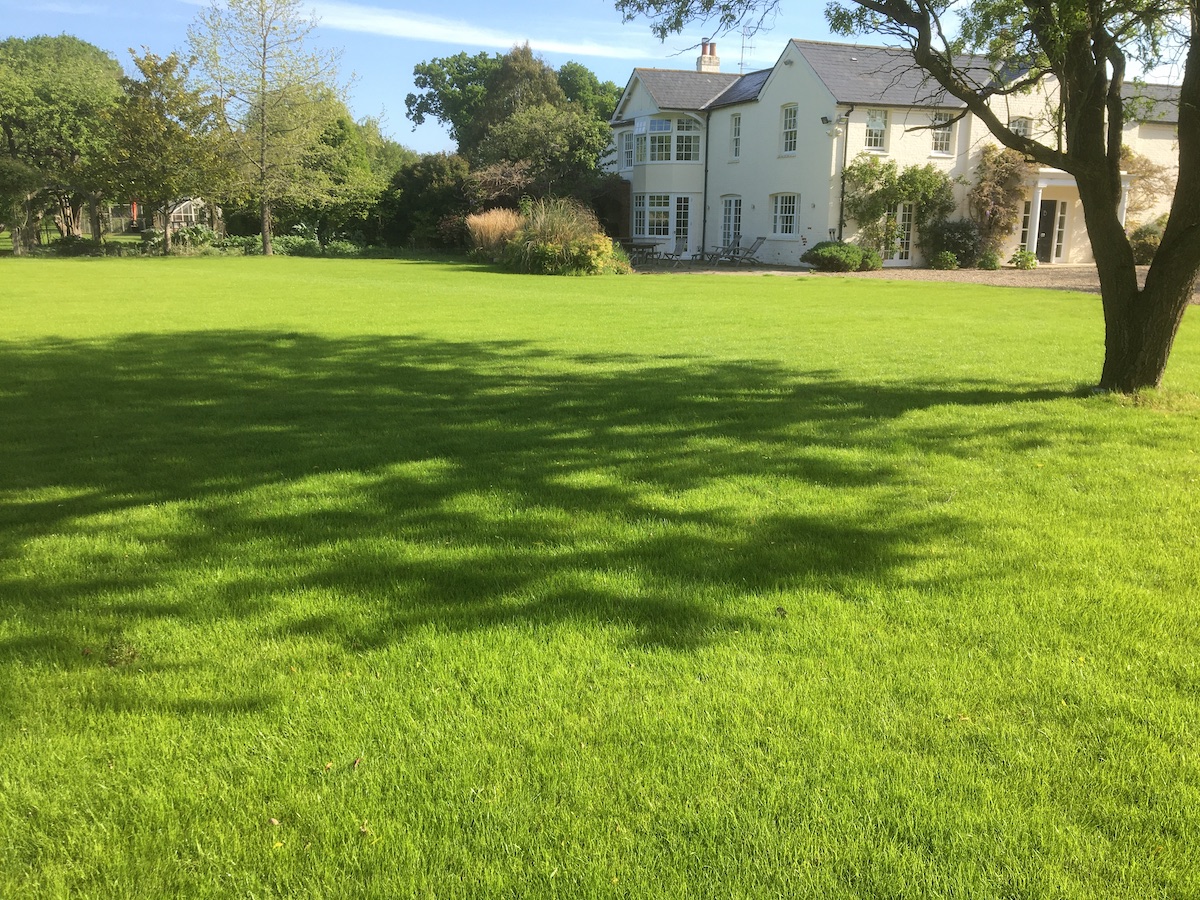Your cart is currently empty!

12 Month Lawn Calendar


January
Remove leaves and other debris from lawn, aerate when conditions permit. Ensure the mower has been overhauled.
February
Continue to remove debris, including worm casts. If the grass is getting long and untidy, trim lightly when the grass is dry using a box mower.
March
Reduce the mowing height gradually throughout the month until it reaches the required height. Light rolling and a systematic but gentle raking will assist spring growth. Worm casts should be removed. Lawn edges can be reshaped and trimmed. If the weather is mild towards the end of the month, apply a spring lawn fertiliser at half the recommended rate, in which case the other half would be applied in May and any weed control would be a separate operation with a proprietary liquid lawn weed killer.
April
Thin or coarse patches of grass can be reseeded, (ensure that the lawn remains level). Apply lawn fertiliser as instructed on the packet if none has been applied in March. If necessary, this can be a ‘weed and feed’ preparation. Do not use ‘weed and feed’ or selective weed killer on seedling grass or young turf.
May
Most lawns only require mowing once a week. However as the grass approaches its maximum growth rate, it may be necessary to increase the frequency for the best results. Little and often is infinitely preferable to a more severe cut. Dead grass or thatch should be raked out early in the month. The other half of March fertiliser dressing should now be applied. An appropriate weed killer can be applied if necessary and not already done.
June
Occasional rolling is beneficial and done automatically if the mower is equipped with a roller. In dry weather trim less frequently and set the mower blades a little higher. Smaller amounts of grass clippings may be left spread on the lawn to retain moisture if there has been little or no rain, but beware as this may return unwanted seeds to the soil. If the lawn shows signs of drought stress it will lose its colour, springiness and texture. It should be watered with a sprinkler early in the morning. We recommend using a sprinkler for the simple reason that it is almost impossible to gauge the application rate when watering with any hand held device. Frequency will depend on the type of grass. Weather conditions also will influence the situation but a good soaking once a week should be adequate. Over watering will encourage shallow roots and weeds. Spiking the lawn with a garden fork will help water soak into dry, hard soil. A seaweed based lawn tonic, preferably containing additional iron, will feed the lawn, but if the lawn is showing signs of wear, a summer lawn fertiliser should be applied.
July & August
Mowing frequency can be adjusted as growth slows. Additional fertilisers should not be necessary, but if it is required, a half dose of spring/summer lawn fertiliser in July should be sufficient. During prolonged spells of hot, dry weather, it may be advisable to lift the level of the cut a little. Otherwise as June.
September
Apply an autumn lawn fertiliser combined with a suitable weed killer if necessary. Scarify to remove thatch. If the grass is thin or needs improvement, sow a suitable seed mix at 15g per square meter yearly in the month. If re-seeding has not been necessary, after a close mowing, any irregularities in surface levels may be corrected by spreading a top dressing of sandy topsoil or 50/50 mix of sharp sand and good loam. The dressing should be dragged to and fro with a lute or the back of a rake to leave the dressing in the depressions. Application rate should be 3 – 4kg per square meter, but be sure to leave the grass leaves visible. Aerate the surface thoroughly with a garden fork or aerator.
October
If there remain activities still to be done from September use the early weeks of October to finish them. If additional areas are to be turfed this is an excellent time to do it. Raise the height of the cut on the mower a little when mowing. Apply a seaweed based lawn tonic with iron.
November & December
Trim the grass only if it is still growing. Remove fallen leaves, worm casts and other garden debris regularly. It is too late now for seeding, but turfing will still be successful.

Buy Turf
Our flagship Rysport turf is grown on the fertile soil of the Romney Marsh, using seed selected from the Sports Turf Research Institute’s list of highly rated cultivars.
Buy Topsoil
Grasslands topsoil is Ideal for you to use all around the garden not just for under new lawns, it can be incorporated into your raised beds, vegetable plots and herbaceous borders.
Enquiry Form

Buying turf online from Grasslands is easy!
Our flagship Rysport turf is grown on the fertile soil of the Romney Marsh using seed selected from the Sports Turf Research Institute’s list of highly rated cultivars
Why Grasslands?
When you order your turf from Grasslands it comes direct from the farm not via a third party, we grow on loam soil which is generally a better match for soils found in the region. For 8 months of the year, during the warmer months our turf is chilled and wrapped to ensure you receive fresh product. Premium turf that won’t fail to satisfy.

